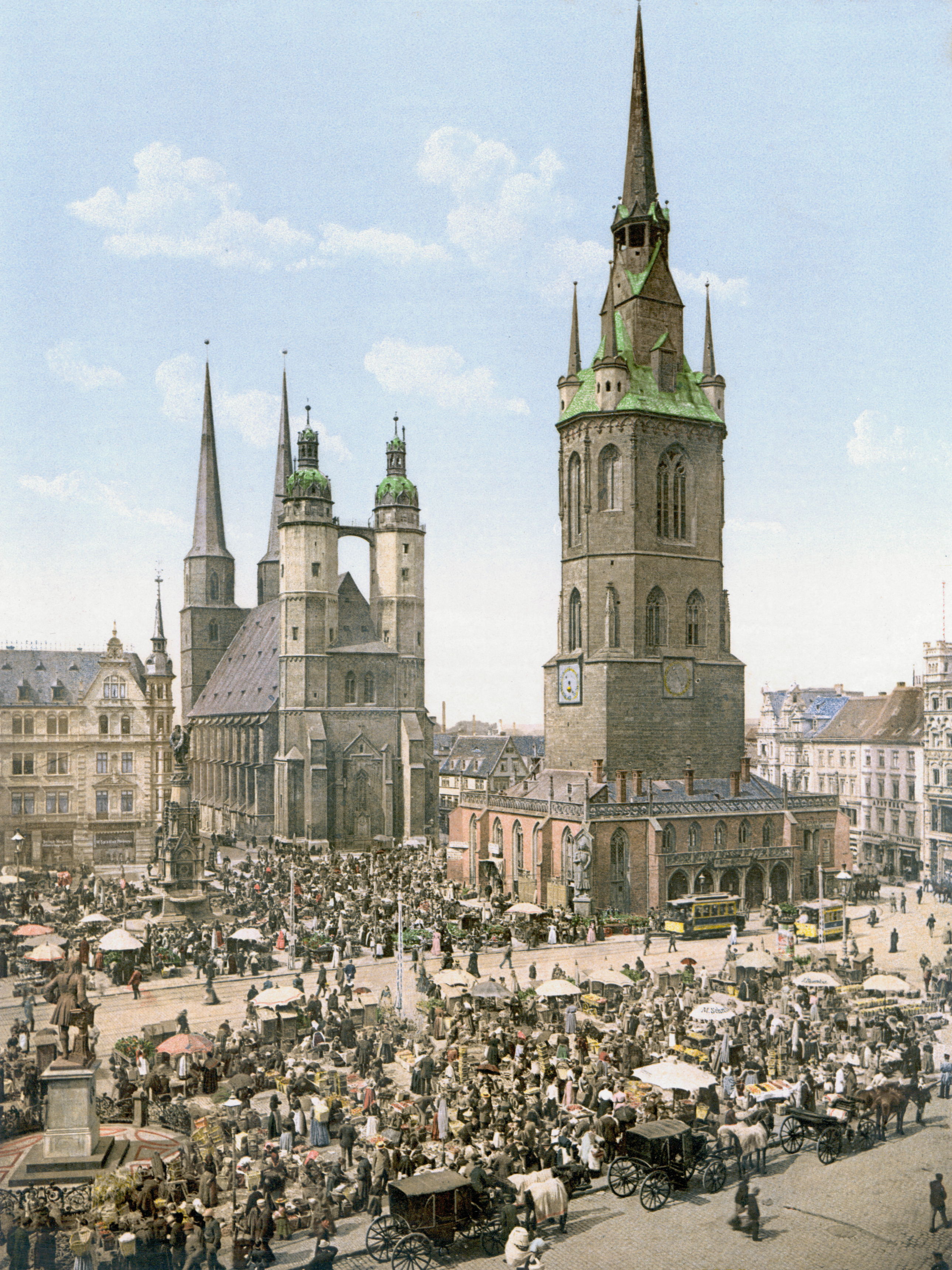|
Curt Elze
Curt Elze (February 16, 1885 – April 9, 1972) was a German anatomist and professor at the universities of Rostock, Giessen, and Würzburg during the Third Reich. He headed the anatomical institute at Würzburg and was associated with Werner Heyde for the supply of execution victims for use in medical studies. Elze was born in Halle (Saale), Halle, son of a namesake lawyer and Lina née Frenkel (1857–1936). He went to school in Halle and studied medicine at the Universities of Freiburg and Halle, graduating in 1907. He studied human embryology and development under Franz Julius Keibel (1861–1929) and received a doctorate in 1908 after which he worked at the University of Vienna under Ferdinand Hochstetter. He completed his habilitation at the University of Heidelberg and became a lecturer. During World War I he served as a military doctor and returned in 1916 to work at the Heidelberg Hospital. He served in Heidelberg until 1921 when he became a professor of anatomy at the Univ ... [...More Info...] [...Related Items...] OR: [Wikipedia] [Google] [Baidu] |
Werner Heyde
Werner Heyde (aka Fritz Sawade) (25 April 1902 – 13 February 1964) was a German psychiatrist. He was one of the main organizers of Nazi Germany's T-4 Euthanasia Program. Early life Heyde was born in Forst (Lausitz), on May 25, in 1902, and completed his Abitur in 1920. From 1922 to 1925, he studied medicine in Berlin, Freiburg, Marburg, Rostock and Würzburg and after short placements at the General Hospital in Cottbus and the sanatorium Berlin-Wittenau became assistant doctor at the ''Universitätsnervenklinik'' (university psychiatric hospital) in Würzburg. He obtained his licence to practice medicine in 1926, having completed all courses throughout his studies with top marks. Career until 1945 In 1933, Heyde made the acquaintance of Theodor Eicke, and became a member of the NSDAP. One year later, he was appointed director of the polyclinic in Würzburg. In 1935, he entered the SS as medical officer with the rank of ''SS-Hauptsturmführer'', and became commander of the ... [...More Info...] [...Related Items...] OR: [Wikipedia] [Google] [Baidu] |
Halle (Saale)
Halle (Saale), or simply Halle (), is the second largest city of the States of Germany, German state of Saxony-Anhalt. It is the sixth-most populous city in the area of former East Germany after (East Berlin, East) Berlin, Leipzig, Dresden, Chemnitz and Magdeburg as well as the List of cities in Germany by population, 31st-largest city of Germany. With around 226,000 inhabitants, it is less populous than the state capital, Magdeburg. With Leipzig, the largest city of Saxony, Halle forms the polycentric metropolitan area, polycentric Leipzig-Halle conurbation. Leipzig/Halle Airport, Leipzig/Halle International Airport lies between the two cities, in Schkeuditz. The Leipzig-Halle conurbation is at the heart of the larger Central German Metropolitan Region. Halle has been known by many names throughout its history. From the 15th to the 17th century: ''Hall in Sachsen''. From then until the beginning of the 20th century, the name Halle an der Saale was used, and still remains a more ... [...More Info...] [...Related Items...] OR: [Wikipedia] [Google] [Baidu] |
Franz Julius Keibel
Franz may refer to: People * Franz (given name) * Franz (surname) Places * Franz (crater), a lunar crater * Franz, Ontario, a railway junction and unorganized town in Canada * Franz Lake, in the state of Washington, United States – see Franz Lake National Wildlife Refuge Businesses * Franz Deuticke, a scientific publishing company based in Vienna, Austria * Franz Family Bakeries, a food processing company in Portland, Oregon * Franz-porcelains, a Taiwanese brand of pottery based in San Francisco Other uses * ''Franz'' (1971 film), a Belgian film * Franz (2025 film), an upcoming biographical film of Franz Kafka * Franz Lisp, a dialect of the Lisp programming language See also * Frantz (other) * Franzen (other) * Frantzen (other) Frantzen or Frantzén is a surname. Notable people with the surname include: * Allen Frantzen (born 1947/48), American medievalist * Björn Frantzén (born 1977), Swedish chef and restaurateur * Jean-Pierre Fran ... [...More Info...] [...Related Items...] OR: [Wikipedia] [Google] [Baidu] |
Ferdinand Hochstetter
Ferdinand Hochstetter (February 5, 1861 – November 10, 1954) was an Austrian embryologist, anatomist and a professor of medicine at the University of Vienna. Life and work Hochstetter was born in Hruschau in Austrian Silesia to Carl Christian and Justine née Bengough. He studied medicine at the University of Vienna and became a demonstrator in 1882 and worked at the anatomical institute under Karl Langer. He completed his habilitation in 1888 and became an associate professor in 1892. He became a full professor at the University of Innsbruck in 1896 and in 1908 he returned to Vienna to succeed Carl Toldt as a second anatomical chair and remained there until his retirement in 1932. He worked on Toldt's anatomical atlas, serving as an editor from the 12th (1921) to the 22nd (1951) editions. He was involved in attempts to improve the nomenclature used in anatomy. After retirement he continued to work at the Josephinum until his death. Hochstetter took an interest in evoluti ... [...More Info...] [...Related Items...] OR: [Wikipedia] [Google] [Baidu] |
Nazi Party
The Nazi Party, officially the National Socialist German Workers' Party ( or NSDAP), was a far-right politics, far-right political party in Germany active between 1920 and 1945 that created and supported the ideology of Nazism. Its precursor, the German Workers' Party (; DAP), existed from 1919 to 1920. The Nazi Party emerged from the Extremism, extremist German nationalism, German nationalist ("Völkisch nationalism, ''Völkisch'' nationalist"), racism, racist, and populism, populist paramilitary culture, which fought against communism, communist uprisings in post–World War I Germany. The party was created to draw workers away from communism and into nationalism. Initially, Nazi political strategy focused on anti-big business, anti-bourgeoisie, and anti-capitalism, disingenuously using socialist rhetoric to gain the support of the lower middle class; it was later downplayed to gain the support of business leaders. By the 1930s, the party's main focus shifted to Antisemit ... [...More Info...] [...Related Items...] OR: [Wikipedia] [Google] [Baidu] |
Hermann Braus
Hermann Braus (15 August 1868 – 28 November 1924) was a German anatomist who worked as a professor of comparative zoology at the University of Heidelberg and of anatomy at the University of Würzburg. He was involved in studies on the evolution of the tetrapod limb and pioneered techniques for visualization in anatomical studies. Life and work Braus was born at Burscheid near Aachen to Bertha Ernestine and Otto Braus. He studied natural science at the University of Bonn and then went to study medicine at the University of Jena. After receiving a degree, he joined the University of Jena and worked on the anatomy collections. He collaborated with Carl Zeiss to improve microscopy for use in physiological and zoological studies. He began to study the nervous system of fish and wrote his dissertation on the topic in 1892 titled "''Über die Rami ventrales der vorderen Spinalnerven einiger Selachier''". Braus challenged the then reigning idea that muscle buds developed into skeleta ... [...More Info...] [...Related Items...] OR: [Wikipedia] [Google] [Baidu] |
Denazification
Denazification () was an Allied initiative to rid German and Austrian society, culture, press, economy, judiciary, and politics of the Nazi ideology following the Second World War. It was carried out by removing those who had been Nazi Party or SS members from positions of power and influence, by disbanding or rendering impotent the organizations associated with Nazism, and by trying prominent Nazis for war crimes in the Nuremberg trials of 1946. The program of denazification was launched after the end of the war and was solidified by the Potsdam Agreement in August 1945. The term ''denazification'' was first coined in 1943 by the Pentagon, intended to be applied in a narrow sense with reference to the post-war German legal system. However, it later took on a broader meaning. In late 1945 and early 1946, the emergence of the Cold War and the economic importance of Germany caused the United States in particular to lose interest in the program, somewhat mirroring the Rever ... [...More Info...] [...Related Items...] OR: [Wikipedia] [Google] [Baidu] |
1885 Births
Events January * January 3– 4 – Sino-French War – Battle of Núi Bop: French troops under General Oscar de Négrier defeat a numerically superior Qing Chinese force, in northern Vietnam. * January 17 – Mahdist War in Sudan – Battle of Abu Klea: British troops defeat Mahdist forces. * January 20 – American inventor LaMarcus Adna Thompson patents a roller coaster. * January 24 – Irish rebels damage Westminster Hall and the Tower of London with dynamite. * January 26 – Mahdist War in Sudan: Troops loyal to Mahdi Muhammad Ahmad conquer Khartoum; British commander Charles George Gordon is killed. February * February 5 – King Leopold II of Belgium establishes the Congo Free State, as a personal possession. * February 9 – The first Japanese arrive in Hawaii. * February 16 – Charles Dow publishes the first edition of the Dow Jones Industrial Average. The index stands at a level of 62.76, and r ... [...More Info...] [...Related Items...] OR: [Wikipedia] [Google] [Baidu] |
1972 Deaths
Within the context of Coordinated Universal Time (UTC) it was the longest year ever, as two leap seconds were added during this 366-day year, an event which has not since been repeated. (If its start and end are defined using Solar time, mean solar time [the legal time scale], its duration was 31622401.141 seconds of Terrestrial Time (or Ephemeris Time), which is slightly shorter than 1908 in science#Astronomy, 1908). Events January * January 1 – Kurt Waldheim becomes Secretary-General of the United Nations. * January 4 – The first scientific hand-held calculator (HP-35) is introduced (price $395). * January 7 – Iberia Airlines Flight 602 crashes into a 462-meter peak on the island of Ibiza; 104 are killed. * January 9 – The RMS Queen Elizabeth, RMS ''Queen Elizabeth'' catches fire and sinks in Hong Kong's Victoria harbor while undergoing conversion to a floating university. * January 10 – Independence leader Sheikh Mujibur Rahman returns to Bangladesh after s ... [...More Info...] [...Related Items...] OR: [Wikipedia] [Google] [Baidu] |




